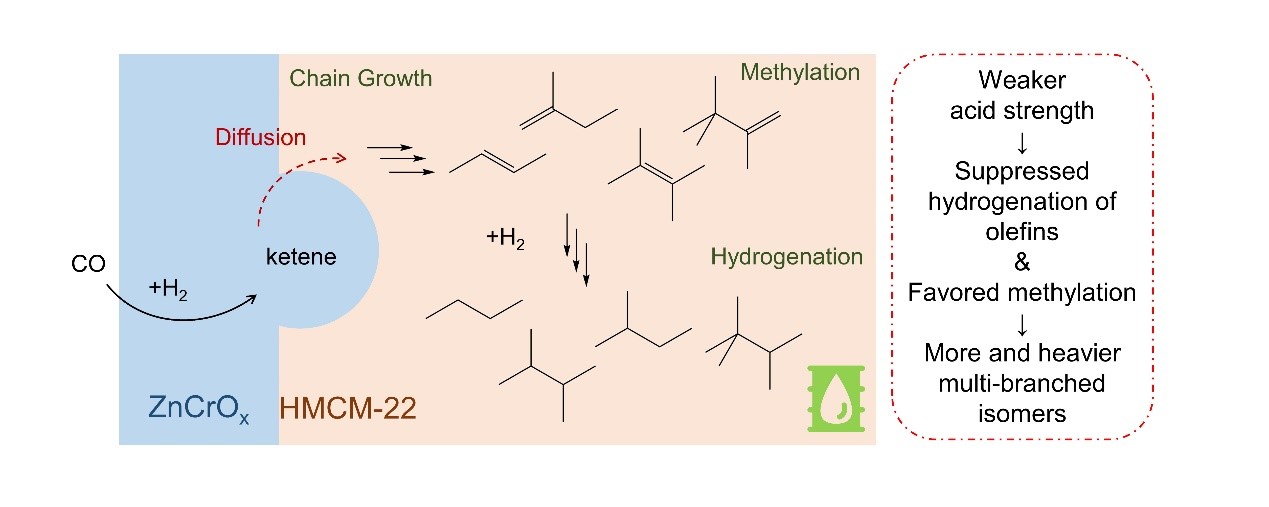Recently, Yilun Ding, PhD student of our group, made new progress in the direct syngas conversion to multi-branched isoparaffins. They demonstrat that the weakened strength of acid sites on HMCM-22 play an important role in turning the reaction pathway to multi-branched isomers in combining with ZnCrOx.
Syngas is a key platform for the utilization of carbon resources including coal, natural gas, and biomass. The conversion of syngas to gasoline with high selectivity has been widely concerned in both industry and academia. Limited by the ASF distribution, the selectivity of gasoline-range C5-C11 hydrocarbons is less than 45% in Fischer Tropsch synthesis (FTS) and majority is normal paraffins, which have low octane number. For applications as a fuel, its products require upgrading to increase its octane number for spark-ignition engines. Frequently, olefins and aromatics, which have high octane numbers, are added. But a high content of aromatics would increase pollutant emissions, and a high content of olefins usually presents high gum content, which causes abnormal function of engine. As a result, their contents are strictly restricted because of health and environmental concerns. In comparison, as a cleaner and more environmentally benign octane number contributor, isoparaffins are preferred, and their octane numbers increase with the degree of branching.
To increase the content of isoparaffins in gasoline range hydrocarbons, acidic zeolites have been studied as cracking and isomerization components by combination with FTS catalysts. However, the ratio of isoparaffins to normal paraffins is only 1.5–4 in most cases. Herein, the bottom-up OXZEO strategy is adopted to achieve the selective produce of multi-branched isomers through the "graft" process.

Based on our previous work (Angew. Chem. Int. Ed., 2019; ACS Energy Lett., 2022), the gasoline selectivity in hydrocarbon increases from 61% to 76–79% by phosphorus modification, with the content of preferred multi-branched isohydrocarbons increasing obviously. Following a simple hydrogenation in the same reactor, the fraction of isoparaffins among gasoline reaches 67%, particularly multi-branched isoparaffins as high as 27.5%, which is three times higher than that obtained by FTS-zeolites and four times higher than that in commercial 92# gasoline. Model reactions reveal that methylation of olefins plays an essential role in the selective formation of multi-branched isoparaffins in syngas conversion rather than isomerization. The weakened acid strength upon phosphorus modification inhibits the hydrogenation of olefins and hence facilitates methylation, resulting in the formation of multi-branched isoparaffins.
This work was published in Applied Catalysis B: Environmental with the title “Enhanced formation of multi-branched isoparaffins in syngas conversion by ZnCrOx-MCM-22 composites”. The work was supported by the National Natural Science Foundation of China, Dalian High-level Talent Innovation Program. (Text/Picture by Yilun Ding)
Article link: https://doi.org/10.1016/j.apcatb.2022.121628